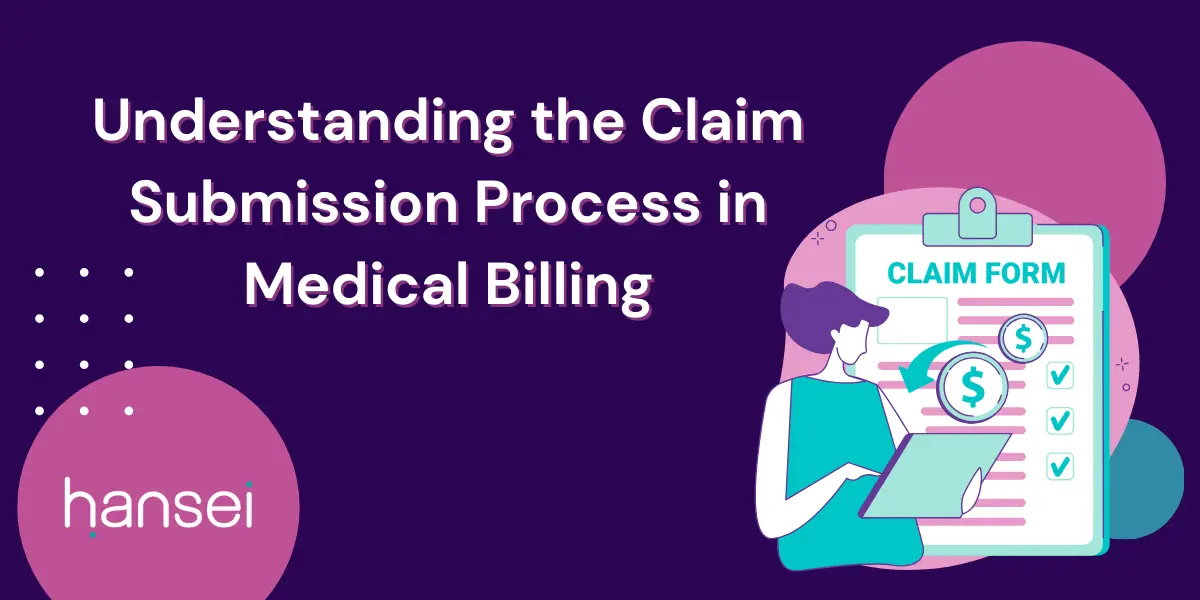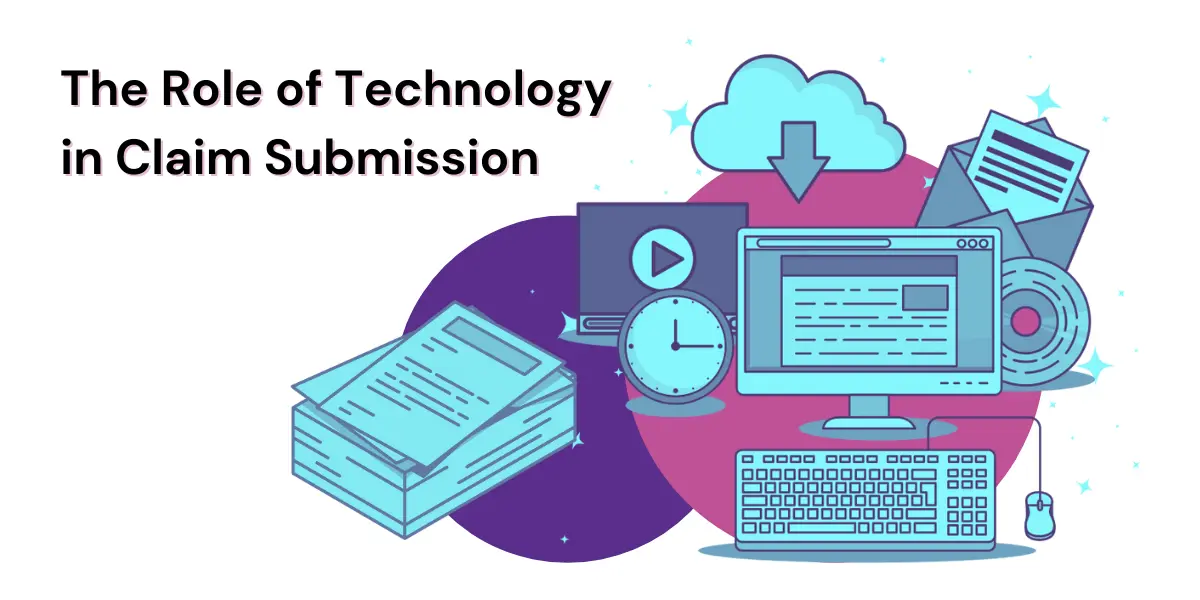Blog

Medical billing is an important part of the healthcare system. It ensures that healthcare providers receive compensation for the services that they provide their patients. Being able to navigate the complexities of this system is essential to understand the medical claim billing process.
Hansei’s medical billing solutions streamline the process of translating healthcare services into numeric and alphanumeric codes that are critical for billing and reimbursement procedures. To help better understand the claim submission process in medical billing, we will shed light on the intricacies of this process, highlight the key elements, and share the role it plays in the healthcare industry.
What is Medical Billing?
Medical billing is the process of translating healthcare services into financial transactions. When a patient receives medical care, like a doctor’s visit, surgery, or diagnostic tests, healthcare providers list these services in their records. These services are then converted into codes, typically using the Current Procedural Terminology (CPT) and International Classification of Diseases (ICD) coding systems. These codes describe the nature of the services provided and the medical conditions being treated.

The Importance of Accuracy in Medical Billing
To ensure that claims are submitted correctly, and reimbursements are received in a timely manner, it requires accurate medical billing. Accurate medical billing is crucial for several reasons:
- Revenue Generation: Medical billing ensures that healthcare providers are compensated for their services. Without proper billing, providers would struggle to cover their costs and stay in business.
- Patient Records: Billing records also serve as a comprehensive history of a patient’s healthcare services. These records are invaluable for both patients and healthcare providers in tracking treatment progress and making informed decisions.
- Insurance Claims: Many patients rely on health insurance to cover their medical expenses. Accurate billing is essential for processing insurance claims, which can be a complex and lengthy process.
- Legal Compliance: Proper billing practices are required by law, and inaccuracies or fraudulent billing can result in legal consequences.
Claim Submission Process in Medical Billing
The claim submission process involves several steps, from coding the services provided to sending the claim to the appropriate payer (usually an insurance company or government program). Here’s a detailed breakdown of the claim submission process:
- Patient Registration: The first step in the process is patient registration. When a patient arrives for medical services, they provide their personal information, insurance details (if applicable), and a reason for their visit. This information is used to create a patient record in the healthcare provider’s system.
- Service Documentation: During the patient’s visit, healthcare providers document the services rendered. This includes the diagnosis, treatments, medications administered, and any other relevant information. The services are then translated into CPT and ICD codes.
- Insurance Verification: If the patient has insurance, the billing department verifies the patient’s coverage and eligibility. This step is crucial to determine what services are covered, any deductibles or copayments, and the insurance company’s billing requirements.
- Claim Generation: With the patient’s information, service documentation, and insurance verification in hand, the billing department generates a claim. This claim includes all the necessary details, such as patient demographics, diagnosis and procedure codes, and the total cost of services provided.
- Claim Scrubbing: Before submission, the claim undergoes a process called claim scrubbing. This involves checking for errors or missing information in the claim. Common issues include incorrect codes, missing patient details, or incomplete documentation.
- Claim Submission: Once the claim is error-free, it is submitted to the appropriate payer. This can be a private insurance company, Medicare, Medicaid, or another government program.
- Adjudication: After receiving the claim, the payor reviews it to determine the covered amount. This process, known as adjudication, involves comparing the services provided to the patient’s insurance policy. The payor may approve the claim, deny it, or request additional information.
- Payment or Denial: Depending on the adjudication outcome, the healthcare provider receives payment from the insurance company or a denial notice. If the claim is denied, the provider may need to resubmit the claim with additional information or appeal the decision.
- Patient Billing: In cases where the patient has a deductible or copayment, the healthcare provider generates a bill for the patient. This bill reflects the portion of the cost not covered by insurance and is sent to the patient for payment.
Challenges in the Claim Submission Process
The claim submission process is not without its challenges. Sometimes these challenges can delay claims being paid timely, which negatively impact healthcare facilities. Some common issues that can arise include:
- Coding Errors
- Insurance Rejections
- Claim Denials
- Submission Timing
- Compliance and Regulation Errors

The Role of Technology in Claim Submission
Technology has changed how healthcare facilities approach the claim submission process for medical billing. Incorporating Electronic Health Records (EHRs) and Practice Management (PM) software allows for seamless documentation, coding, and claim submissions.
Hansei’s Medical Billing solutions offer healthcare and mental health treatment facilities an alternative way of handling the claim submission process in medical billing to improve revenue cycle management, increase accuracy and efficiency, reduced administrative burden, and more. The technology that Hansei offers makes handling these processes (and more) much easier for healthcare administrators.
Streamlining the Claim Submission Process in Medical Billing
Even though the claim submission process can be complex and challenging, technology has made it easier for healthcare facilities and their administrators to streamline the process. This helps to ensure accuracy, prompt reimbursements, and compliance within the industry.
Hansei streamlines the claim submission process in medical billing to ensure that coding is consistent, and claims are processed – with less denials due to human error. If you are looking for a solution to address the pain points within your practice, schedule a demo today and find out why Hansei makes streamlining your claim submission process a personalized journey.

Ready to focus on providing healthcare? Let us lighten your load.
We’re here to address your pain points and create growth opportunities for your organization. We’re passionate about what we do, and it shows in every interaction. Learn what makes us tick and schedule a demo today.